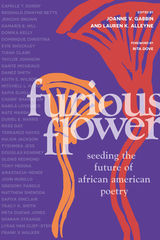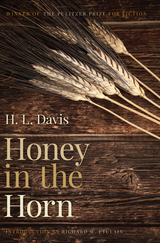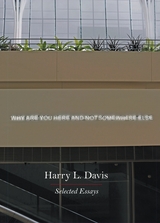


Histories of Southeastern Archaeology originated as a symposium at the 1999 Southeastern Archaeological Conference (SEAC) organized in honor of the retirement of Charles H. McNutt following 30 years of teaching anthropology. Written for the most part by members of the first post-depression generation of southeastern archaeologists, this volume offers a window not only into the archaeological past of the United States but also into the hopes and despairs of archaeologists who worked to write that unrecorded history or to test scientific theories concerning culture.
The contributors take different approaches, each guided by experience, personality, and location, as well as by the legislation that shaped the practical conduct of archaeology in their area. Despite the state-by-state approach, there are certain common themes, such as the effect (or lack thereof) of changing theory in Americanist archaeology, the explosion of contract archaeology and its relationship to academic archaeology, goals achieved or not achieved, and the common ground of SEAC.
This book tells us how we learned what we now know about the Southeast's unwritten past. Of obvious interest to professionals and students of the field, this volume will also be sought after by historians, political scientists, amateurs, and anyone interested in the South.
Additional reviews:

Clay Calvert, an orphan, works as a hand on a sheep ranch until he stumbles into trouble and is forced to flee. Journeying throughout the state, from the lush coastal forests, to the Columbia Gorge, to the golden wheat fields east of the Cascades, he encounters a cast of characters as rich and diverse as the land, including a native Tunne boy and a beautiful girl named Luce.
Originally published in 1935, Honey in the Horn reveals as much about the prevailing attitudes and beliefs of H. L. Davis’ lifetime as it does about the earlier era in which it is set. It transcends the limitations of its time through the sheer power and beauty of Davis’ prose. Full of humor and humanity, Davis’s first novel displays a vast knowledge of Pacific Northwest history, lore, and landscape.
An essential book for all serious readers of Northwest literature, this classic coming-of-age novel has been called the “Huckleberry Finn of the West.” It is the only Oregon book that has ever won a Pulitzer Prize for fiction. With a new introduction by Richard W. Etulain, this important work from one of Oregon’s premier authors is once again available for a new generation to enjoy.


Remembering Awatovi is the engaging story of a major archaeological expedition on the Hopi Reservation in northern Arizona. Centered on the large Pueblo village of Awatovi, with its Spanish mission church and beautiful kiva murals, the excavations are renowned not only for the data they uncovered but also for the interdisciplinary nature of the investigations. In archaeological lore they are also remembered for the diverse, fun-loving, and distinguished cast of characters who participated in or visited the dig.
Hester Davis’s lively account—part history of archaeology, part social history—is told largely in the words of the participants, among whom were two of Davis’s siblings, artist Penny Davis Worman and archaeologist Mott Davis. Life in the remote field camp abounded with delightful storytelling, delicious food, and good-natured high-jinks. Baths were taken in a stock tank, beloved camp automobiles were given personal names, and a double bed had to be trucked across the desert and up a mesa to celebrate a memorable wedding.
Remembering Awatovi is illustrated with over 160 portraits and photographs of camp life. Essays by Eric Polingyouma and Brian Fagan enrich the presentation.

For many baseball fans, a major league game is a flickering image on a television screen or a story in a newspaper. Real baseball is played in their hometown, in a ballpark that seats 5,000 fans, not 50,000. The players wear uniforms like the ones seen on television, but their names are not household words—unless it happens to be summer and you are living in Bluefield, West Virginia, or Cedar Rapids, Iowa, or Batavia, New York.
In 1993, ex-New Yorker Hank Davis put a successful career in psychology and music journalism on hold and went off on a loving odyssey through twenty-eight host towns in search of minor league baseball. Writing with beguiling charm and a firm knowledge of the game, he traveled the back roads of small-town Canada and America and found more than he bargained for: a wondrous cast of characters on the field, in the stands, and on the way to the ballpark. Davis recorded them with his splendid, incisive prose and his remarkable photographs. Along the way he encountered not only the baseball stars of the future, like Derek Jeter, Terrell Wade, and Tim Crabtree, but also a host of fascinating unknowns and longshots. They, too, have stories to tell that will not appear on the stat sheets.
With infectious energy, Davis also looked beyond the players. There are coaches, men in their forties and beyond, making arduous bus trips with players half their age. There are assistant general managers happy to scrub toilets and paint dugouts just to be close to the game. Kids sell Cracker Jacks in Bluefield, and grown-ups operate the mechanical bull at Durham Athletic Park.
Davis finds the small-town setting a universe unto itself. Within it, minor league baseball is lost in a time warp. Unabashedly unsophisticated, it has all the quirky charm of a traveling carnival—full of hawkers and gawkers and the unaffected simplicity of a concert in the park on a hot July night. Davis' full account of his baseball journey is rich with detail inside and outside the ballpark.


On the occasion of the fiftieth anniversary of Davis’s arrival at the Booth School, Why Are You Here and Not Somewhere Else offers seven essays by Davis that offer new perspectives and contribute to a more well-rounded understanding of business education. Adapted from convocation addresses given by Davis at different points during his five-decade career, the essays encapsulate the spirit of business education at the Booth School, while at the same time providing encouraging, invaluable wisdom for those about to embark on business careers or take on leadership positions. Topics addressed range from the role of the university in the business world to the crucial role of intangible values in shaping one’s career.
Davis has been a formative influence on more executives and leaders than perhaps any other business educator living today, and Why Are You Here and Not Somewhere Else provides a unique and valuable perspective on how leaders in business and elsewhere can shape and define their careers in new ways.
READERS
Browse our collection.
PUBLISHERS
See BiblioVault's publisher services.
STUDENT SERVICES
Files for college accessibility offices.
UChicago Accessibility Resources
home | accessibility | search | about | contact us
BiblioVault ® 2001 - 2024
The University of Chicago Press









